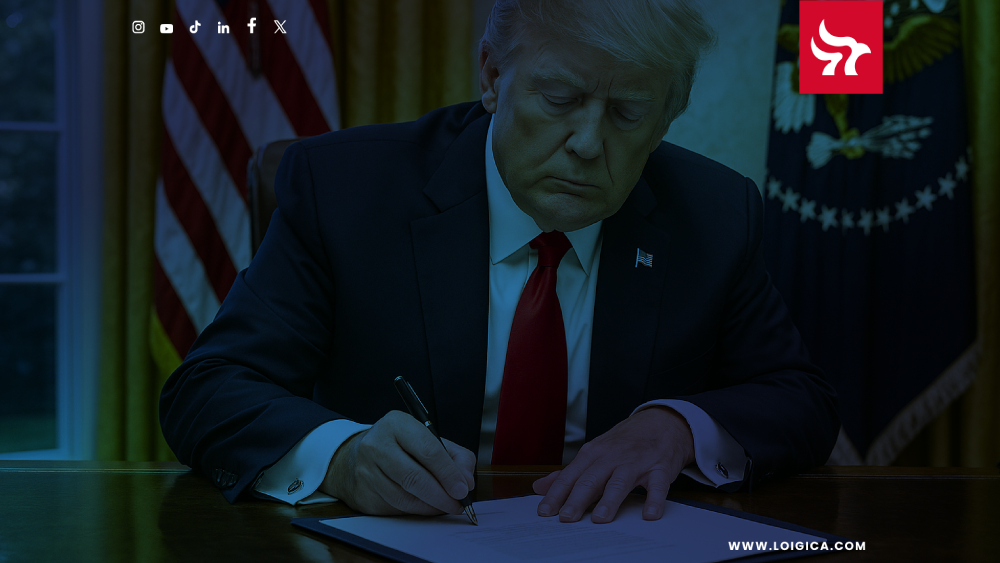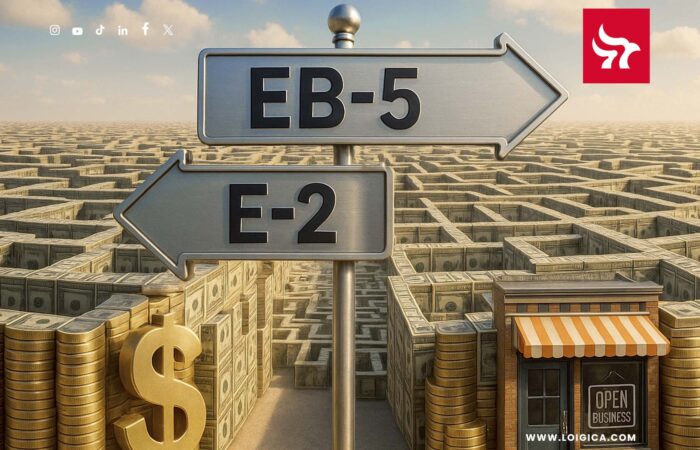Get the latest information
Suscribe to our newsletter and receive on your inbox every Monday everything you need to know on US Immigration
Moving to the United States through an investment is a dream for many entrepreneurs, small business owners, and real estate enthusiasts. The idea of running a business in America while gaining U.S. residency is appealing.
However, if you’ve ever searched how to move to the U.S. as an investor, you likely discovered that the process is complex and filled with challenges. From high minimum investment amounts to long visa delays, the path to an investor visa can be daunting. In recent years, new rules and proposals have added even more twists.
Paths to U.S. Immigration Through Investment
The U.S. offers a few different investment-based visa paths. Each comes with its own requirements and difficulties. The most common options include:
EB-5 Immigrant Investor Visa
This program grants a U.S. green card (also known as a “permanent residence card”) to those who invest a significant amount in a new U.S. business that creates at least 10 full-time jobs. The minimum investment required is very high–currently at least $800,000 in a Targeted Employment Area (rural or high-unemployment area) or $1,050,000 elsewhere.
The EB-5 is open to investors from any country, and it puts them on a direct path to permanent residency. However, it’s not a quick process; after investing, applicants first get a conditional green card and must prove within two years that their investment created the jobs. This visa is popular among those who can raise substantial capital, but it carries heavy requirements and lengthy processing times.
E-2 Treaty Investor Visa
The E-2 is a non-immigrant (temporary) visa for entrepreneurs from certain treaty countries who invest a substantial amount in a U.S. business. There is no fixed minimum investment for an E-2, but in practice it must be a significant, meaningful amount. We often advise investing at least $100,000 to strengthen the case.
Unlike EB-5, the E-2 visa does not directly lead to a green card. It allows you to live in the U.S. to run your business and can be renewed indefinitely (in two-year increments) as long as the business remains active and viable.
Only citizens of countries that have a special treaty with the U.S. qualify for E-2 status. If you are from a country like China or India (which have no treaty), you cannot get an E-2 visa. (Some investors solve this by obtaining second citizenship in a treaty country, but that adds cost and complexity.)
The E-2 visa requires you to be actively involved in the business; purely passive investments won’t count.
Other Investor Pathways
Aside from EB-5 and E-2, there are a few other routes that investors and business owners use:
- One is the L-1 Visa (Intracompany Transferee), which isn’t an “investment visa” per se, but allows a foreign business owner or executive to open a U.S. branch or subsidiary and transfer to the U.S. to manage it. The L-1 can later lead to a green card in the EB-1C category if the U.S. business grows. This path still requires substantial capital and a successful foreign business.
- Another option for traders is the E-1 Treaty Trader Visa, which is for those conducting significant trade between the U.S. and their home country (also requiring treaty nationality).
- Finally, the U.S. has a program called the International Entrepreneur Parole, which can temporarily allow startup founders to live in the U.S. if they have raised significant U.S. investment—but this is a parole (temporary permission) and not a visa, and it doesn’t give permanent residence.
An Important Note
Buying a house or purely passive real estate investment alone does not qualify for any U.S. investor visa. Many other countries offer “golden visas” for real estate purchases, but the U.S. requires an active business investment that benefits the economy (like hiring employees or offering services). Although President Trump has promised a new Gold Visa, that has not come into fruition as of today. In short, there are multiple pathways to consider, but each comes with strict criteria.
Three Financial Hurdles and Business Challenges
Investing your way into America involves more than just enthusiasm – it requires serious money and business commitment. Financial hurdles are often the first and biggest barrier for potential investor immigrants.
High Minimum Investment Amounts
The scale of investment needed can be prohibitive. The EB-5 program’s minimum investment is $800,000 (in targeted areas) or $1.05 million in most cities. This amount was raised in 2022 and will adjust for inflation over time. Coming up with nearly a million dollars, at risk, is not feasible for many small business owners.
Even the E-2 visa, which has no fixed dollar minimum, typically requires a substantial sum—often over six figures—to be taken seriously. Many successful E-2 applications involve investments around $100,000–$200,000 or more, depending on the business. Saving or raising this capital is a huge challenge. Investors may need to liquidate assets, pool funds, or take loans (though loans must not be secured by the very business you’re investing in).
It’s a common question: “What is the minimum investment amount for a U.S. investor visa?” The answer is that it’s quite high, and for EB-5 it’s explicitly defined and non-negotiable. This high cost barrier is a deliberate policy to ensure only serious investors apply, but it certainly narrows the field.
Funds at Risk and No Guaranteed Return
Investing for a visa isn’t like buying a government bond. U.S. immigration rules require that your investment capital is truly at risk—you cannot just park money and get it back; it must be subject to loss or gain in the business venture. This means you could lose all of your investment if the business or project fails. There is no guarantee you’ll get profits or even your principal back.
For EB-5 investors, funds are often tied up for years in a project, and they only hope to recoup money after the project (for example, if investing through a regional center real estate development, the money might come back after the project is completed or the loan is repaid). For E-2 entrepreneurs, the money you invest goes into starting or buying a business, which may or may not succeed.
The financial risk is very real. A bad business decision could lead not only to lost money but also jeopardize your immigration status (if the business collapses, an E-2 visa won’t be renewed, and an EB-5 green card could be denied at the final stage for not meeting job creation or sustaining the investment).
In recent years, the U.S. government has implemented new safeguards to protect investors in cases of fraud or project misconduct—for example, the 2022 EB-5 Reform law introduced ways for “good faith” investors to continue their process even if their investment project gets sanctioned. Despite these protections, due diligence is crucial. Prospective immigrant investors must thoroughly vet any regional center, franchise, or business partner. Scams and fraudulent schemes have targeted foreign investors in the past, so being cautious with where you put your money is part of the challenge.
Business Viability and Job Creation Requirements
Investing enough money is just one piece: the investment must also translate into a real, functioning business that benefits the U.S. economy.
For EB-5, that means creating 10 full-time U.S. jobs within about two years. Think about that: hiring 10 employees, and paying them full-time wages, is a significant managerial and financial endeavor, especially if you are starting a brand-new business. Many EB-5 candidates choose to invest in larger projects via regional centers to fulfill this job requirement indirectly (since regional center projects can count indirect job creation like construction jobs, etc.). But if you choose to start your own business for EB-5, you bear the full burden of those 10 jobs – a tough task for a small enterprise.
For the E-2 visa, there isn’t a specific number of jobs required, but there is a concept of a “non-marginal” business. The business must not exist solely to support you and your family; it should ideally create jobs or economic growth beyond just your income. In practice, E-2 investors are expected to hire U.S. workers or at least have a plan to do so. An E-2 business that only ever has the investor as the sole worker can be viewed as marginal and might fail the visa criteria. Additionally, E-2 applicants often need to present a detailed business plan showing how their investment will expand the business and how many jobs it might create over five years. All of this means that investor immigrants must be prepared to actually run a business in the United States, a business that can grow and hire.
Running a business in a new country can come with a learning curve: different market dynamics, regulations, taxes, and labor laws. For real estate investors, this could mean shifting from a purely passive investment model (like just collecting rent) to an active business model (perhaps a property management company, a real estate development firm, or a hospitality business) in order to qualify for a visa. Ensuring the business will thrive and meet the visa requirements is one of the hardest parts of investor immigration.
The financial and business challenges include raising a large amount of capital, risking that money in a venture, and meeting strict business outcome requirements These hurdles weed out many would-be applicants.
As one of our attorneys once bluntly stated, the EB-5 route “requires a substantial capital investment, exposes investors to financial risks, involves a complex application process…, and can take a lengthy time to process”. The E-2 route, while often requiring less money, still demands a “substantial” investment and a serious commitment to running a business—not an easy path for those unfamiliar with the U.S. market, without deep pockets or a good attorney to their side.

Harry Tapias
CEO and co-founder at LOIGICA. Provides strategic immigration guidance for businesses and individuals, drawing on finance, marketing, and legal expertise from DePaul University and Nova Southeastern University. Specializes in H-1B, L-1, and PERM Labor Certification. Recognized for an empathetic and innovative approach, he has earned appointments to the boards of Vizcaya Museum and Gardens and the Miami-Dade County History Preservation Board.
This blog was written with asistance of generative AI. It is provided for informational purposes only. It does not constitute legal advice. The information presented here is based on general principles of U. S. immigration laws, as well as general information available for public search on public matters, as of the date of publication. Immigration laws and regulations are subject to change and individual circumstances may vary. If you need expert counceling on immigration matters, contact one of our attorneys.


Lawsuit challenges the $100,000 H-1B visa fee: what we know so far



